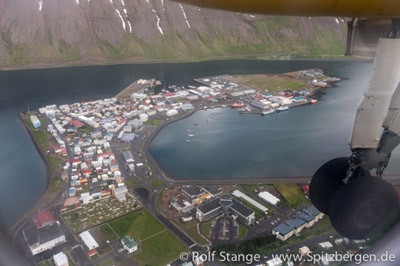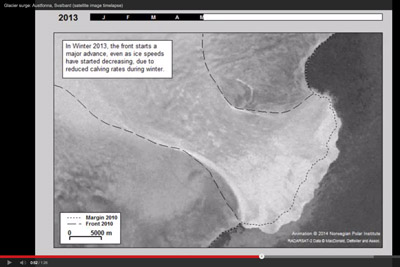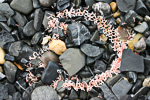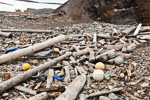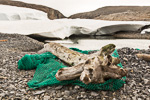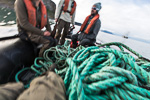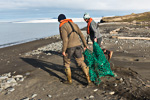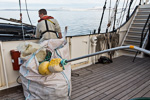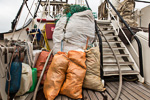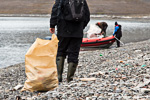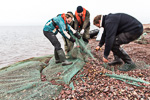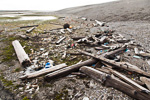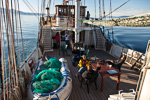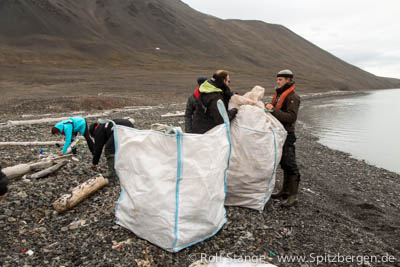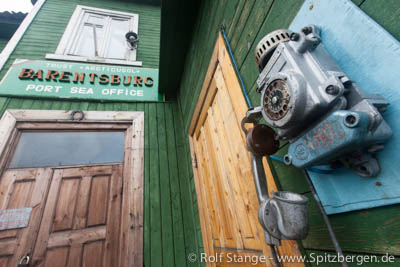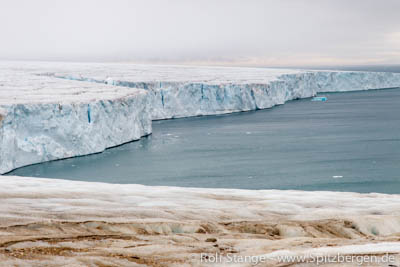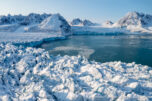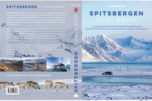-
current
recommendations- Liefdefjord
New page dedicated to one of Spitsbergen's most beautiful fjords. Background information and many photos.
- New Spitsbergen guidebook
The new edition of my Spitsbergen guidebook is out and available now!
- Liefdefjord
New page dedicated to one of Spitsbergen's most beautiful fjords. Background information and many photos.
Page Structure
-
Spitsbergen-News
- Select Month
- May 2025
- April 2025
- March 2025
- February 2025
- January 2025
- December 2024
- November 2024
- October 2024
- September 2024
- August 2024
- July 2024
- June 2024
- May 2024
- April 2024
- March 2024
- February 2024
- January 2024
- December 2023
- November 2023
- October 2023
- September 2023
- August 2023
- July 2023
- June 2023
- May 2023
- April 2023
- March 2023
- February 2023
- January 2023
- December 2022
- November 2022
- October 2022
- September 2022
- August 2022
- July 2022
- June 2022
- May 2022
- April 2022
- March 2022
- February 2022
- January 2022
- December 2021
- November 2021
- October 2021
- September 2021
- August 2021
- July 2021
- June 2021
- May 2021
- April 2021
- March 2021
- February 2021
- January 2021
- December 2020
- November 2020
- October 2020
- September 2020
- August 2020
- July 2020
- June 2020
- May 2020
- April 2020
- March 2020
- February 2020
- January 2020
- December 2019
- November 2019
- October 2019
- September 2019
- August 2019
- July 2019
- June 2019
- May 2019
- April 2019
- March 2019
- February 2019
- January 2019
- December 2018
- November 2018
- October 2018
- September 2018
- August 2018
- July 2018
- June 2018
- May 2018
- April 2018
- March 2018
- February 2018
- January 2018
- December 2017
- November 2017
- October 2017
- September 2017
- August 2017
- July 2017
- June 2017
- May 2017
- April 2017
- March 2017
- February 2017
- January 2017
- December 2016
- November 2016
- October 2016
- September 2016
- August 2016
- July 2016
- June 2016
- May 2016
- April 2016
- March 2016
- February 2016
- January 2016
- December 2015
- November 2015
- October 2015
- September 2015
- August 2015
- July 2015
- June 2015
- May 2015
- April 2015
- March 2015
- February 2015
- January 2015
- December 2014
- November 2014
- October 2014
- September 2014
- August 2014
- July 2014
- June 2014
- May 2014
- April 2014
- March 2014
- February 2014
- January 2014
- December 2013
- November 2013
- October 2013
- September 2013
- August 2013
- July 2013
- June 2013
- May 2013
- April 2013
- March 2013
- February 2013
- January 2013
- December 2012
- November 2012
- October 2012
- September 2012
- August 2012
- July 2012
- June 2012
- May 2012
- April 2012
- March 2012
- February 2012
- January 2012
- December 2011
- November 2011
- October 2011
- September 2011
- August 2011
- May 2011
- April 2011
- March 2011
- February 2011
- January 2011
- December 2010
- November 2010
- September 2010
- August 2010
- July 2010
- June 2010
- May 2010
- April 2010
- March 2010
- February 2010
- November 2009
- October 2009
- August 2009
- July 2009
- June 2009
- May 2009
- April 2009
- March 2009
- February 2009
- January 2009
- December 2008
- November 2008
- October 2008
- August 2008
- July 2008
- June 2008
- May 2008
- April 2008
- March 2008
- February 2008
- April 2000
- Select Month
-
weather information
-
Newsletter

| Guidebook: Spitsbergen-Svalbard |
Home → June, 2014
Monthly Archives: June 2014 − News
Arctic blog: Jan Mayen, Spitsbergen
Join voyages to Jan Mayen and Spitsbergen from the sofa! Rolf Stange will publish impressions and adventures from his polar travels more or less regularly through the arctic summer. Little stories and experiences, first-hand from the far north. More here in the blog.
Approach to Isafjordur: Beginning of the Jan Mayen adventure.
MS Langøysund believed to pay illegally low wages
MS Langøysund is a day trip boat operating every summer from Longyearbyen in the Isfjord area. Every day from June to September, it is sailing to Barentsburg or Pyramiden, passing highlights of nature including glaciers and bird cliffs.
The ongoing season is, so far, not going too well for Langøysund and the owner company. A few weeks ago, the ship ran aground in Borebukta. The hull was damaged and the passengers had to continue their journey back to Longyearbyen on another ship. At least it did not take too long before Langøysund was repared and cleared for sailing again.
Now, the owner company, Henningsen Transport og Guiding (HTG) in Longyearbyen, is facing accusations of paying illegal low wages to the crew. Already in April, the responsible union (Norsk Sjømannsforbund) had to take action to make sure the crew, which is largely of Philippine nationality, is getting Norwegian contract, as required by Norwegian law for any ship sailing under Norwegian flag.
During a control in Longyearbyen it turned out that the crew has got Norwegian contracts, but is not getting the wages according to it. According to contract and Norwegian law, the minimum wage for crew on ships under Norwegian flag is 5,000 US-$ plus overtime pay, which can be expected to be significant. But according to Norsk Sjømannsforbund, the crew see hardly 1,500 US-$. Cooperation with the Philippines is difficult for the union, as they fear to be black-listed by their contracting agency even if their wages are, in theory, guaranteed by law.
According to the owner, HTG, the contract partner of the crew members is an agency in Manila, which is receiving payment from HTG to distribute it to the individual crew members. HTG states that contract and payment are correct and does not consider to provide documentation of payment to Norsk Sjømannsforbund as required. The union has set a deadline which ran out today (Thursday) at 9 a.m. As Norsk Sjømannsforbund has not received any payment documentation, they have now announced to arrest the ship.
HTG is facing similar accusations on MS Billefjord, another day trip boat, new in the business in Spitsbergen. In this case, HTG is not the owner, but largely responsible for the management.
MS Langøysund in Ymerbukta. Is the crew getting illegal low wages?
Source: Norsk Sjømannsforbund
Surge of ice cap Austfonna: time lapse video
Parts of Austfonna, the large ice cap on Nordaustland, have recently advanced rapidly or “surged”, as scientists call this behaviour, which is caused by glacier dynamics rather than climate change. See Austfonna: an ice cap on the move, Spitsbergen-Svalbard.com news earlier in June.
The Norwegian Polar Institute has published a time lapse video composed of about 1000 single satellite images that visualizes the surge of Austfonna impressively. Parts of the glacier front advanced more than 4 kilometres. The surge culminated in 2012.
More about surging glaciers in general and Austfonna in Rocks and Ice.
The surge of an ice cap of the size of Austfonna has consequences. It is currently by the largest contributor to global sea level rise in the whole Spitsbergen archipelago, with a contribution outweighing all other glaciers in Svalbard together. Locally, it may cause hazards to navigation: the density of icebergs is increased, and the pushing glacier front may have changed sea bottom topography.
Time-lapse video composed of about 1000 satellite images, showing the surge of Austfonna (© Norwegian Polar Institute, Screenshot). Click here to see the video on Youtube.
Source: Norwegisches Polarinstitut
Fredheim: virtual tour through Spitsbergen’s most famous trapper hut
Fredheim, Spitsbergen’s most famous trapper hut, is now accessible online in shape of a virtual tour. The wooden hut, with a luxurious two floors, was built and used by the legendary Norwegian hunter Hilmar Nøis. It is beautifully situated in Tempelfjord, but difficult to reach outside the snow mobile season, and if you manage to get there, then you will face closed doors.
Now it is possible to visit every room in Villa Fredheim (including the two adjacent huts) any time from anywhere without any effort: In late March, I have had the opportunity to panorama-photograph Fredheim in detail, and I have put the results together to create a virtual tour, which is now online, making it possible to visit Fredheim inside, every room. The tour runs automatically like a film; alternatively, it is possible to select individual rooms (panoramas). Short explanatory texts give some background information and stories from the wild years of the trappers in Spitsbergen.
The local newspaper Svalbardposten has already turned their readers’ attention to this possibility to visit Fredheim online. More than 1000 virtual visitors have been there within a few days, more than visited Fredheim physically at the “open day” that is held there twice during the winter season: the only possibility for the public so far to get some inside impressions from Fredheim.
Enjoy – this is the way to Fredheim 🙂
Fredheim, Hilmar Nøis’ in Tempelfjord, is not easy to get to and locked. But it is now possible to visit the famous hut virtually.
The Ocean Cleanup: solution for the global plastic pollution problem
Plastic pollution in the oceans is one of the truly threatening problems for the environment on a global scale, including the Arctic. You can see amazing amounts of plastics on many of Spitsbergen’s beaches, a lot from fisheries, but also everyday use plastic items including toothbrushes, lighters, bottles and so on and so forth. The list is endless. For an impression, have a look at the famous photos taken by photographer Chris Jordan on the remote Midway Islands in the Pacific: Albatross chicks who died with a stomach filled of plastic garbage, because it looked like food to their parents.
On almost every trip in Spitsbergen, we collect several cubic metres of plastic garbage from remote beaches, which has led to visible improvements in many places over the years (and by the way, nobody has the capacity to collect comparable amounts of plastics in such remote areas as tourist ships!). This is good, but obviously not the solution to a global problem.
Some impressions of plastic pollution on Spitsbergen’s beaches, from Bear Island in the south to Nordaustland in the far northeast, and of our efforts to clean some of these beaches.
- gallery anchor link: #gallery_475
Click on thumbnail to open an enlarged version of the specific photo.
Every day, plastic pollution is killing large numbers of fish, seabirds, mammals (from seals to dolphins and whales) and turtles in the world’s oceans. And probably even worse, once waves and UV radiation have grind the plastics down into microscopic particles, plankton is eating it, thus incorporating plastic in the food chain, where it is enriched on every trophic level upwards.
To really do something about plastic pollution, it would be necessary to:
- use much less plastic items in our everyday life. This is for everybody. How often do you throw a plastic bag away after having used it only once?
- replace plastics with bio-degredable materials. Next to consumers, industry, science and politics all need to do their homework to achieve this.
- reduce the incredible amounts of plastics already present in the world’s oceans today. And this is where it is currently getting interesting: after several years of work, The Ocean Cleanup has published a feasibility report, introducing a realistic concept to remove plastic pollution from the ocean on a globally relevant scale. The main idea is to let the currents do the main work: install shallow barriers that catch plastics and concentrate them so they are relatively easy to remove from the water. The water and animals keep drifting under the barrier to reduce by-catch. Costs are estimated at 4.50 Euro per kg plastic or 33 times less than other methods available, according to The Ocean Cleanup. The project claims that it should be possible to reduce the amount of plastics floating in the infamous Pacific Garbage Patch by 50 % over 10 years at costs small compared to the damage done by the plastics both to marine ecosystems and economies.
The impression remains that The Ocean Project is likely able to make a significant contribution to the solution of an urgent global problem, at a price more than reasonable. To lift the project up to the next level, 2 million dollars are to be collected via crowdfunding. At the time of writing (18 June), more than half a million have already been donated. The present author and owner of this website has already made his contribution and asks the reader kindly to consider a donation. If you have seen the amounts of plastics on remote beaches in Spitsbergen or elsewhere or if you have seen Chris Jordan’s above-mentioned photos, they you are probably happy to support The Ocean Cleanup. Click here to get to The Ocean Cleanup crowdfunding website.
And remember a cotton bag for your next shopping trip … 🙂
Crew and passengers of SV Antigua collecting plastic garbage in Woodfjord, north Spitsbergen. This is done on almost every trip, also by other ships.
Source: The Ocean Cleanup
Communication breakdown in Spitsbergen
It was a drastic experience which made pretty clear how remote and potentially vulnerable the communities in Spitsbergen still are: on Monday, almost 2 weeks ago (02 June), the communication between Spitsbergen and the outside world broke completely down for a couple of hours.
Some years ago, fibre cables between Spitsbergen and Norway have replaced earlier communication systems. The need to transfer large data volumes that come from satellite antennas near Longyearbyen (SvalSat, the white balls on Platåberget above the airport) to customers including ESA and NASA has made the cables necessary.
The high technology superfast connection failed completely on said Monday: the whole traffic between Spitsbergen and the rest of the world went down for several hours because of a problem in a relay station in Andenes (Vesterålen, north Norway), where the fibre cable reaches the mainland. The whole technical infrastructure is double to compensate for technical problems with parts of the system, but this time, the whole thing was dead for a while.
This did not just cut Longyearbyens inhabitants off from telephone and internet, but it made it impossible to reach police, rescue services and other vital services and infrastructure and it largely shut down internal communication within these bodies. The hospital in Longyearbyen relies on communication with the university hospital in Tromsø and the constant availability of air transport of patients to mainland Norway in difficult cases. Satellite phones were quickly put into use, but they require a view to the sky without any obstructions, which does not exactly apply to a medical doctor’s work place. Plus, there are many of them in Longyearbyen, and also this line of communication turned out unable to serve the amount of traffic: it was at times simply impossible to get through. Even in normal times, satellite phones are not exactly reliable.
The problem was solved after a few hours, but it made the potential for disaster quite clear. Especially representatives of vital infrastructure and public services such as police, rescue service and hospital made it clear that the availability of communication is of high importance for public safety and health.
Telenor, the Norwegian provider of communication services and infrastructure, is now working with authorities to make sure this does not happen again. But there is now talking about leaving some of the good old landline phones in place. Longyearbyen, because of its size, technical infrastructure and political circumstances a very modern place, is intended to be one of the first places in Norway without a landline phone system, where all communication is based on a mobile grid. The recent incident will be part of this debate, that’s for sure.
Works always: fire- and explosion-proof phone in Barentsburg. The problem is, you won’t get far with it …
Source: Svalbardposten
Austfonna: an ice cap on the move
The ice cap Austfonna is covering large parts of Nordaustland, the second-largest island in the Spitsbergen archipelago. The total surface area of Austfonna, actually a composite of several smaller ice caps, is more than 8400 square kilometres.
For decades, Austfonna was considered to be relatively stable: it did not suffer massive loss of volume as many other glaciers in Spitsbergen and elsewhere in the Arctic. More recently, marginal parts were thinning while central parts were gaining thickness, a behaviour known to prepare a surge if it lasts for some time. A surge is a sudden advance where a glacier can move forward over many kilometres within a year or two, it is a result of glacier mechanics and not of climate variations (see Rocks and Ice for more about glaciers and surges). Also parts of Austfonna are known to have surged in the past, for example Bråsvellbreen, the southern part of the ice cap, in the 1930s.
Information from satellite images has now yielded evidence for increased velocity over large parts of Austfonna. The ice cap is pushing into the Barents Sea, producing vast amounts of icebergs and thus contributing significantly to global sea level rise, currently more than all other glaciers in Spitsbergen together. Nevertheless, scientists involved in observing Austfonna assume it will increase its volume in the years to come.
AECO, the arctic expedition cruise organization, has issued a warning to navigate carefully in these waters, as larger numbers of icebergs than usual and changes of the glaciated coastline have to be expected.
Such an event, where an ice cap of thousands of square kilometres starts to move more rapidly, is unique during the period of detailed scientific observation and regular touristic access. The recent observation is based on data from the European satellite Sentinel-1a. One reason these data have drawn more than just a little bit of attention is the fact that the satellite had, at the time in question, not even fully reached its orbit, but was nevertheless able to produce high quality data.
The ice cap Austfonna on Nordaustland has started to move more rapidly on large parts of its huge area.
Source: BBC News.
News-Listing live generated at 2025/May/09 at 23:29:11 Uhr (GMT+1)
